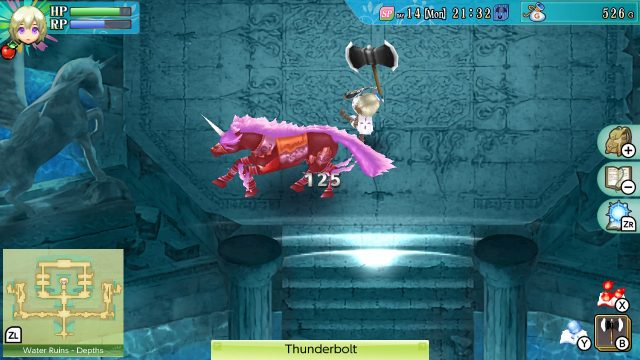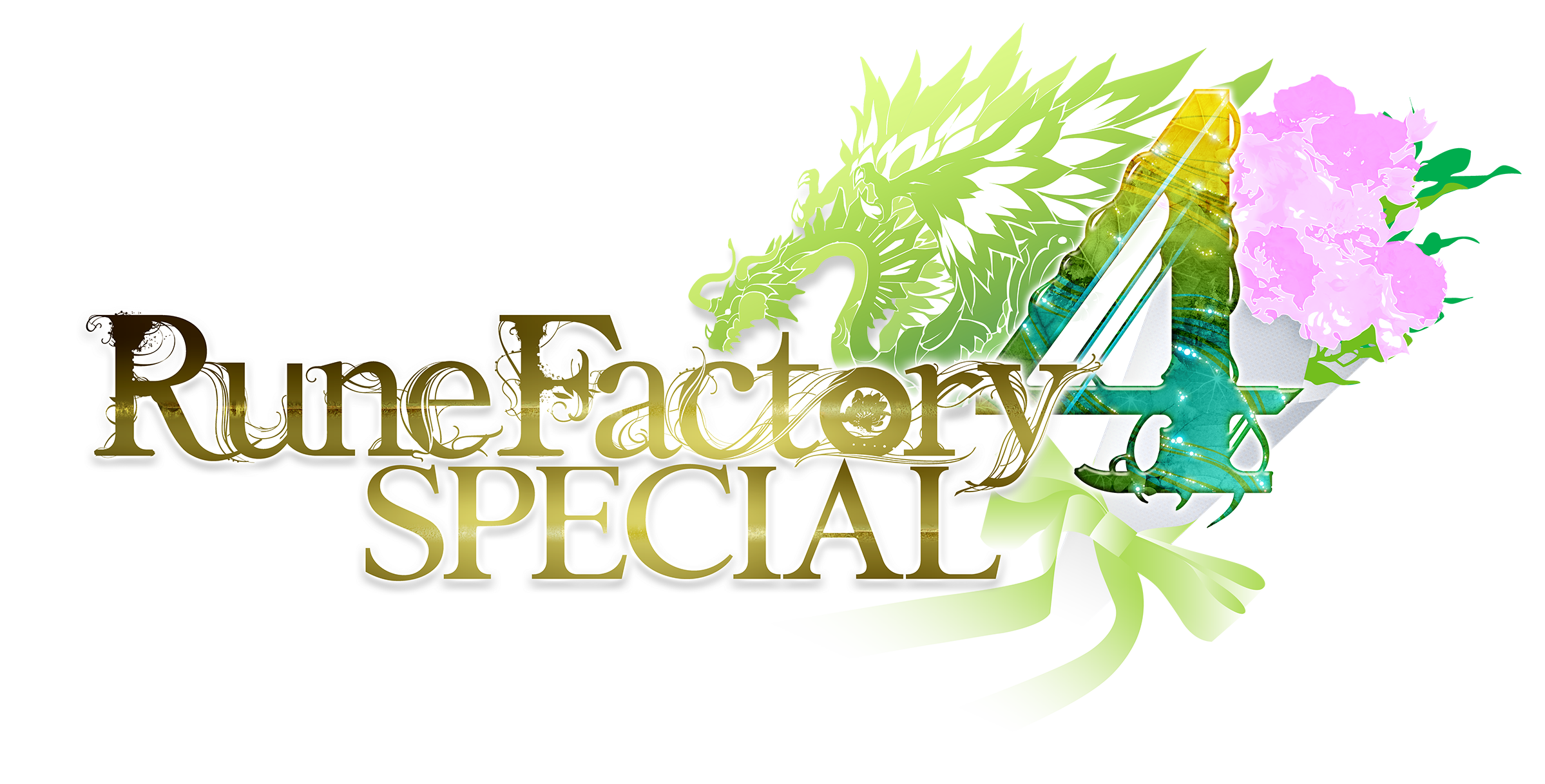Rune Factory 4 Special Review
Something Special is Produced in this Factory
Back in the heyday of 3DS gaming, the original Rune Factory 4 grabbed my attention away from all other titles I was interested in for a good few months and led me on a wonderful adventure in the land of Selphia. At that time I figured I’d be fully enamored with Rune Factory 6 or 7 by the year 2020, but corporate events brought about a small dark age in the series, with no new titles since 2013. With Rune Factory 5 announced to be in development, a remastered Rune Factory 4 Special was ported to the Switch this year, and with it came everything that’s always made this beautiful blend of farming sim and action RPG special.
The story of Rune Factory 4 is somewhat typical JRPG fare, with interesting and forgettable bits in equal measures. The nature of the gameplay allows for multiple play styles; simultaneously giving tasks to complete to push the main story ahead, but allowing causal players the freedom to take as long as they would like to do so. Players begin the game as an amnesiac, fresh off a fall from an airship. Initially mistaken as a prince or princess, a situation that quickly resolves itself, players are given the tasks of managing a large farm at the center of a rural town and investigating local phenomena involving monsters in the surrounding areas. For the most part, players are left to progress at their own pace, with only a few key characters and crafting materials locked behind story progression. Those new to the series likely will find themselves farming and focusing on the social sim elements until they feel the need to adventure out for new materials, or alternatively rushing into battling monsters and progressing the story until they feel they need to farm, cook, and craft better equipment and gear. With no deadline in place, it’s perfectly acceptable to bounce between those two tactics or to find one’s own blend of gameplay management.
With such freedom to advance, the story itself doesn’t always have the emotional impact that it could. The game contains three main story arcs, though the third primarily serves as the post-game. During the first two arcs, players are tasked with a stereotypical RPG progression of saving their friends, the town, the country, and finally the world, before the post-game arc brings the story back to more local concerns. All of these problems seem important at the time they arise, but when players realize they can take a season to develop their level 10 turnip before progressing, even the more impactful story beats fade into the realm of forgettable. This isn’t to say that the story is bad, but after completing the game and moving on to other titles, players likely won’t dwell too long upon the impact they made on the land of Selphia.
Much more likely to stick in players’ heads are the farming and social sim elements of Rune Factory 4. As in most farming sim games, there are crops to grow, fish to catch, and local NPCs to befriend and date. All of these elements are very well done as one would expect from the fourth entry of a series that was built upon the successes of the Harvest Moon/Story of Seasons franchises. To guide players through the deeper gameplay elements, there is a friendly mailbox in town that provides daily tasks such as “harvest 10 turnips” or “raise the friendship level of everyone in town”. Rewards for completing tasks are new tools, new seed types, and new items to help boost the output of the farm. Some requests will come from the numerous townsfolk as well. Rune Factory 4 shines in its development of memorable townsfolk, who will also supply their own requests, such as the blacksmith who’s always out to make a quick dollar, or the brave female knight who’s duty-bound to protect the town but is absolutely scared to death of ghosts. Interactions between characters are always a pleasure, and often enough downright hilarious.
Rune Factory 4 runs on the calendar system that’s become a farming-sim staple. A minute for the player translates to an hour in-game and this clock and the stamina gauge provide the limits for what players can accomplish each day. These limits aren’t an issue until the longer dungeons later in the game, as farming tasks can become more automated as the game progresses, and stamina can be restored by consuming food or visiting the public bath house. The four seasons of spring, summer, fall, and winter all pass by with a wide variety of fun festival days. Festivals typically involve some sort of challenge where players are pitted against townsfolk either to bring a crop or cooked dish with them or to complete a task, such as catching as many fish as possible in eight hours. Many rewards aren’t worth the effort of winning, so casually enjoying what happens often is the better option rather than saving, resetting, and trying again.
Although it’ll never be confused with an Atelier title, Rune Factory 4 offers a wide variety of crafting. Players can cook the crops they grow using a half-dozen kitchen appliances, forge and customize hundreds of pieces of armor and weapons, and craft multiple other healing and decorative items as well. New recipes for all of these items can be learned by consuming bread sold at the local eatery. If one’s skill in the specific area is high enough, munching on a loaf will open up cooking dishes with greater healing potential or recipes for axes that do more damage. While one could possibly avoid almost all crafting by purchasing everything from the various stores around town, prices are steep and not always worth it. The time spent crafting that perfect weapon and upgrading it to double damage output with added elemental powers is both enjoyable and well worth it.
No matter how one obtains new swords, or any of the other half-dozen types of weapons to choose from, they get plenty of use, as despite its farming sim veneer, Rune Factory 4 is also an action RPG. To progress the story, players will have to venture far and wide outside of town to discover dungeons that require exploration. Thankfully, there are fast-travel options available both to and from distant locations, making exploration with the game clock running easily manageable. Also easily manageable are the typically straightforward hack-and-slash encounters that make up most fights. Boss battles are the exception, and often require more thoughtful techniques and equipment loadouts. While the standard difficulty isn’t overly challenging for those taking the time to battle, raise levels, and craft as they explore, there is a difficulty slider for combat, so those looking for a lighter or more challenging experience can have it.
Also available to players is the ability to bring two helpers along into battle. Townsfolk are willing to join up for a time, and they gain levels and can be equipped with gear simply by handing things over to them. Many monsters are also available to be tamed. Once they reside in the barn on the farm, they can be set to water and harvest crops, or join in battle. Like the NPCs, they gain experience and level up with use. While these helpers are never going to be mistaken for having genius-level AI, they’re worthwhile to bring along, especially as the game progresses and players can recruit high-level monsters. Permadeath is not a worry in Rune Factory 4 as the local doctor is happy to revive players for a fee if they die, and monsters and NPCs heal up eventually on their own. Despite the high stakes of some battles, the action RPG elements fit quite well with the casual gameplay nature of the game as a whole.
The major change from Rune Factory 4 to Rune Factory 4 Special is the move from dual screens to one. The change is done quite well; Marvelous seamlessly moved information typically presented on the second screen to overlays that can be accessed via the ZR, ZL, R, and L buttons. Maps can be displayed semi-transparently on the bottom left of the main screen in two sizes or can be hidden altogether. While crafting, purchasing items at stores, or any other time more detailed information on items is required, the information boxes on the right of the screen can be enlarged. Other changes made for Rune Factory 4 Special are merely cosmetic, with an upgrade to high-definition graphics. Backgrounds and menus look very nice in handheld mode, though both are a little blurry on larger TVs; the sprites also show a degree of pixelization, especially while the Switch is docked. These graphical hiccups in no way take away from how nice the game looks overall. There are a large variety of cute monsters to battle or recruit, many visually different fields and dungeons to explore, and plenty of uniquely designed townsfolk to encounter.

Normally one wouldn’t axe the pretty pink unicorn, but when it’s trying to skewer you, all bets are off.
The content additions made to Rune Factory 4 Special are focused around the NPCs. The short pre-rendered videos of each main NPC that show when players first encounter them are nicely done, as is the updated opening sequence. There is a Newlywed mode that adds extra story to one’s chosen spouse later on in the game, though marriage, like many other events that take place in town, occurs purely randomly, and some players may never see this content, despite weeks of dating and raising the love interest of the chosen character. In the original release, the post-game story arc of Rune Factory 4 could take many seasons or years on in-game time to trigger, being based on yet another random event. In Rune Factory 4 Special, it happened very quickly, within days of beating the main game.
Audio in Rune Factory 4 Special can be casually described as “just fine.” For the Special edition, the option to use Japanese or English voices has been added. Not every line is voiced, but those that are are done quite well. The soundtrack rides that perfect border between instantly forgettable and pleasant, something that one will neither pause their farming chores to listen to, but nor will they feel the need to hit mute. It completely fits the casual, laid-back approach to much of this game.
Rune Factory 4 Special is an easy recommendation to any RPGamer who enjoys farming and life sim games, as well as for those casual Stardew Valley fans that wished for more variety in the combat aspects. It’s been long enough since the 3DS release that this game can be enjoyed fresh again, and for those who missed it the first time around, now’s the perfect time to give it a try. I thoroughly enjoyed my time back in the land of Selphia, and seeing everything that made Rune Factory one of my favorite portable game series work so well on the Switch has me even more excited to see what’s ahead for the series now that we’ve sadly left the dual-screen period of gaming behind.
Disclosure: This review is based on a free copy of the game provided by the publisher.


Farming sim elements have deep leveling systems
Monster taming has practical uses
Untimed adventure allows for multiple play styles
Deep crafting system
Random event triggers still frustrating
Plot doesn't present as important








Thank you very much for your detailed review.
Another one I need to buy. These Switch RPG releases need to slow down so I can catch up!